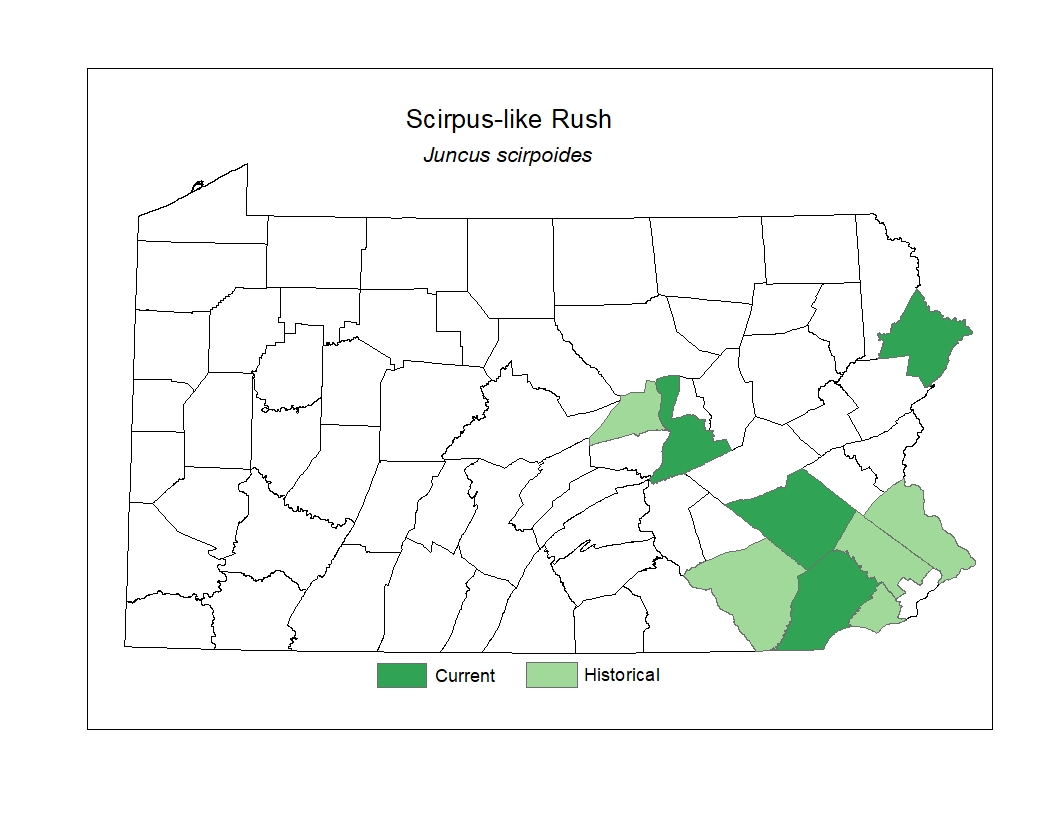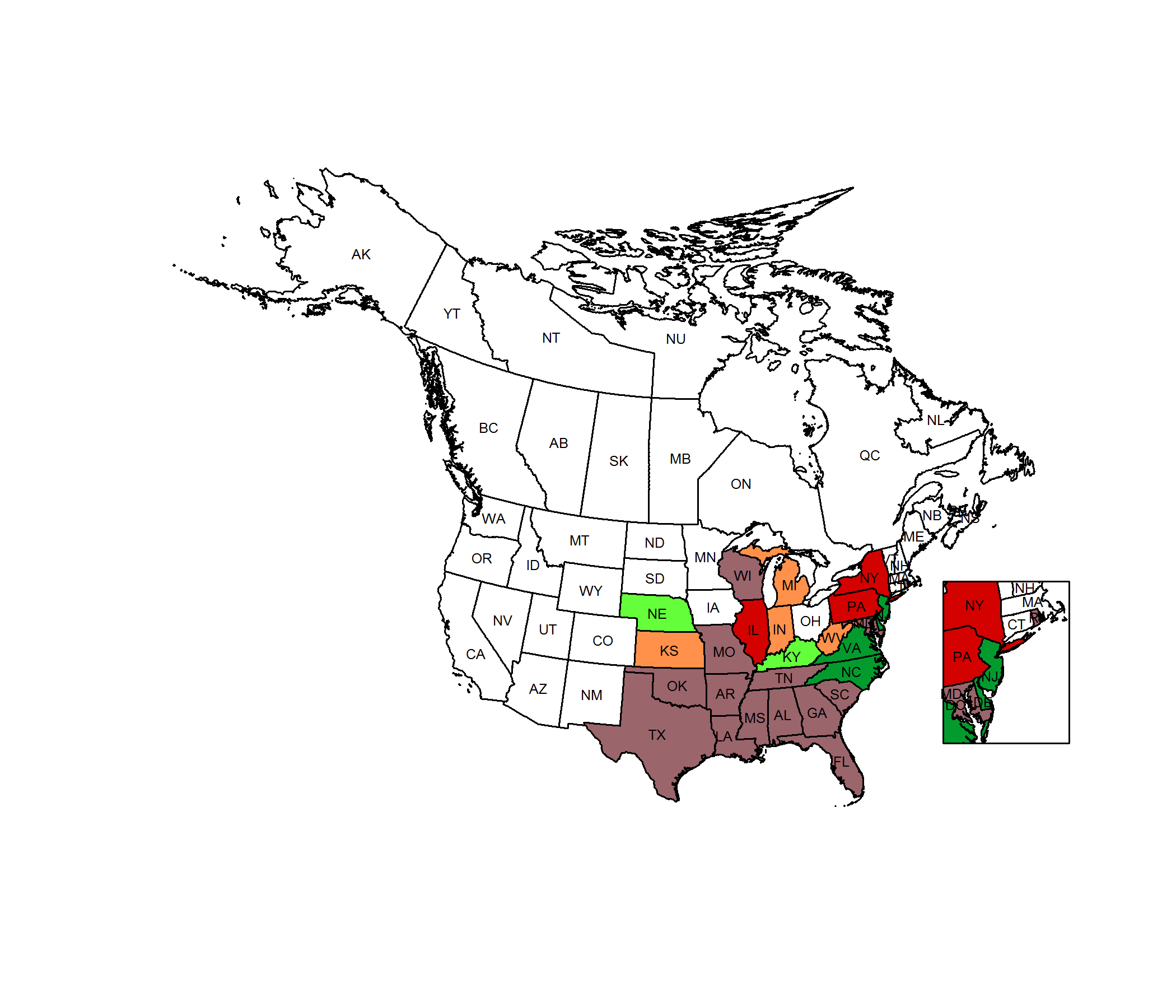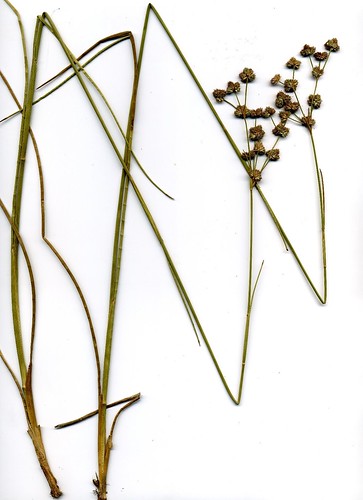 Species Factsheets
Species Factsheets
Juncus scirpoides
Scirpus-like Rush
State Status: Pennsylvania Endangered (PE)
PBS Status: Pennsylvania Endangered (PE)
Federal Status:
Global Rank: G5
![]() rank interpretation
rank interpretation
State Rank: S1
Description
Scirpus-like Rush is a perennial grass-like herb with a rounded aerial stem that may reach 0.6 m in height, and also produces horizontal underground stems, or rhizomes. The leaves have a sheathing basal portion and an elongate and linear blade that is rounded in cross-section, unlike the flat blades found in most grass-like plants, and has a series of horizontal thickenings found at regular intervals along its length. The minute flowers, appearing in summer, are grouped in dense, rounded clusters on the branches of the upper part of the aerial stem. Each individual flower has 6 parts that are analogous to the green sepals and colored petals found on many kinds of flowers, but in this species the parts are only 2-4 mm in length, more-or-less similar in shape to each other, vary from green to light brown to reddish, and surround the 3 stamens, or pollen-producing structures within the flower. The fruit consists of a dry capsule that equals or slightly exceeds the flower parts, and when mature splits open to release the microscopic 0.4-0.5 mm brownish seeds.
Rank Justification
Critically imperiled in the nation or state because of extreme rarity (often 5 or fewer occurrences) or because of some factor(s) such as very steep declines making it especially vulnerable to extirpation from the state.
Habitat
It grows on shorelines of ponds, lakes and streams, and in bogs and marshes.
Survey Dates
Fruits July - early November
Distribution
Scirpus-like Rush ranges from New York to Wisconsin and south into Florida and Texas. In Pennsylvania, this species represents a southern species and has been documented in a few eastern counties.

Management
The viability of populations of Scirpus-like Rush and its habitat may be enhanced by creating buffers and protecting the natural hydrology around wetlands and controlling invasive species.
Conservation Status Map

NatureServe. 2017. NatureServe Explorer: An online encyclopedia of life [web application]. Version 7.1. NatureServe, Arlington, Virginia. Available https://explorer.natureserve.org.
- NatureServe. 2018. NatureServe Explorer: An online encyclopedia of life [web application]. Version 7.1. NatureServe, Arlington, Virginia. Available at https://www.natureserve.org/explorer
- Pennsylvania Natural Heritage Program. 2018.
- Rhoads, A.F. and W.M. Klein, Jr. 1993. The Vascular Flora of Pennsylvania. American Philosophical Society, Philadelphia, Pennsylvania. Rhoads, A.F. and T.A. Block.
- 2007. The Plants of Pennsylvania: An Illustrated Manual. 2nd edition. University of Pennsylvania Press, Philadelphia, Pennsylvania.







